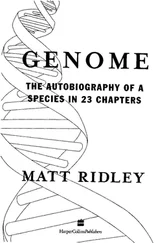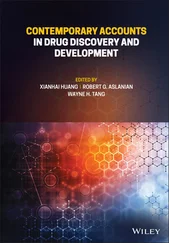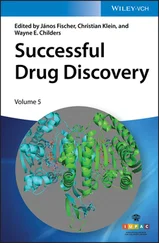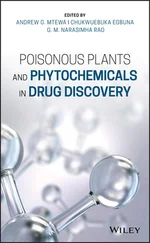Genome Editing in Drug Discovery
Здесь есть возможность читать онлайн «Genome Editing in Drug Discovery» — ознакомительный отрывок электронной книги совершенно бесплатно, а после прочтения отрывка купить полную версию. В некоторых случаях можно слушать аудио, скачать через торрент в формате fb2 и присутствует краткое содержание. Жанр: unrecognised, на английском языке. Описание произведения, (предисловие) а так же отзывы посетителей доступны на портале библиотеки ЛибКат.
- Название:Genome Editing in Drug Discovery
- Автор:
- Жанр:
- Год:неизвестен
- ISBN:нет данных
- Рейтинг книги:5 / 5. Голосов: 1
-
Избранное:Добавить в избранное
- Отзывы:
-
Ваша оценка:
- 100
- 1
- 2
- 3
- 4
- 5
Genome Editing in Drug Discovery: краткое содержание, описание и аннотация
Предлагаем к чтению аннотацию, описание, краткое содержание или предисловие (зависит от того, что написал сам автор книги «Genome Editing in Drug Discovery»). Если вы не нашли необходимую информацию о книге — напишите в комментариях, мы постараемся отыскать её.
A practical guide for researchers and professionals applying genome editing techniques to drug discovery Genome Editing in Drug Discovery,
Genome Editing in Drug Discovery
Genome Editing in Drug Discovery
Genome Editing in Drug Discovery — читать онлайн ознакомительный отрывок
Ниже представлен текст книги, разбитый по страницам. Система сохранения места последней прочитанной страницы, позволяет с удобством читать онлайн бесплатно книгу «Genome Editing in Drug Discovery», без необходимости каждый раз заново искать на чём Вы остановились. Поставьте закладку, и сможете в любой момент перейти на страницу, на которой закончили чтение.
Интервал:
Закладка:
129 131
130 132
131 133
132 134
133 135
134 136
135 137
136 139
137 140
138 141
139 142
140 143
141 144
142 145
143 146
144 147
145 148
146 149
147 150
148 151
149 152
150 153
151 154
152 155
153 156
154 157
155 158
156 159
157 160
158 161
159 162
160 163
161 164
162 165
163 166
164 167
165 168
166 169
167 170
168 171
169 172
170 173
171 175
172 177
173 178
174 179
175 180
176 181
177 182
178 183
179 184
180 185
181 186
182 187
183 188
184 189
185 190
186 191
187 192
188 193
189 194
190 195
191 196
192 197
193 198
194 199
195 200
196 201
197 202
198 203
199 204
200 205
201 206
202 207
203 208
204 209
205 210
206 211
207 213
208 214
209 215
210 216
211 217
212 218
213 219
214 220
215 221
216 222
217 223
218 224
219 225
220 226
221 227
222 228
223 229
224 231
225 232
226 233
227 234
228 235
229 236
230 237
231 238
232 239
233 240
234 241
235 242
236 243
237 244
238 245
239 246
240 247
241 248
242 249
243 250
244 251
245 252
246 253
247 254
248 255
249 256
250 257
251 258
252 259
253 261
254 262
255 263
256 264
257 265
258 266
259 267
260 268
261 269
262 270
263 271
264 272
265 273
266 274
267 275
268 276
269 277
270 278
271 279
272 281
273 282
274 283
275 284
276 285
277 286
278 287
279 289
280 290
281 291
282 292
283 293
284 294
285 295
286 296
287 297
288 298
289 299
290 300
291 301
292 302
293 303
294 304
295 305
296 306
297 307
298 308
299 309
300 310
301 311
302 312
303 313
304 315
305 316
306 317
307 318
308 319
309 320
310 321
311 322
312 323
313 324
314 325
315 326
316 327
317 329
318 330
319 331
320 332
321 333
322 334
323 335
324 337
325 338
326 339
327 340
328 341
329 342
330 343
Genome Editing in Drug Discovery
Edited by
Marcello Maresca
AstraZeneca, BioPharmaceuticals R&D
Mölndal, Sweden
Sumit Deswal
AstraZeneca, BioPharmaceuticals R&D
Mölndal, Sweden

This edition first published 2022. © 2022 John Wiley & Sons, Inc.
All rights reserved. No part of this publication may be reproduced, stored in a retrieval system, or transmitted, in any form or by any means, electronic, mechanical, photocopying, recording or otherwise, except as permitted by law. Advice on how to obtain permission to reuse material from this title is available at http://www.wiley.com/go/permissions.
The right of Marcello Maresca and Sumit Deswal to be identified as the authors of the editorial material in this work has been asserted in accordance with law.
Registered Office John Wiley & Sons, Inc., 111 River Street, Hoboken, NJ 07030, USA
Editorial Office 111 River Street, Hoboken, NJ 07030, USA For details of our global editorial offices, customer services, and more information about Wiley products visit us at www.wiley.com.
Wiley also publishes its books in a variety of electronic formats and by print‐on‐demand. Some content that appears in standard print versions of this book may not be available in other formats.
Limit of Liability/Disclaimer of Warranty In view of ongoing research, equipment modifications, changes in governmental regulations, and the constant flow of information relating to the use of experimental reagents, equipment, and devices, the reader is urged to review and evaluate the information provided in the package insert or instructions for each chemical, piece of equipment, reagent, or device for, among other things, any changes in the instructions or indication of usage and for added warnings and precautions. While the publisher and authors have used their best efforts in preparing this work, they make no representations or warranties with respect to the accuracy or completeness of the contents of this work and specifically disclaim all warranties, including without limitation any implied warranties of merchantability or fitness for a particular purpose. No warranty may be created or extended by sales representatives, written sales materials or promotional statements for this work. The fact that an organization, website, or product is referred to in this work as a citation and/or potential source of further information does not mean that the publisher and authors endorse the information or services the organization, website, or product may provide or recommendations it may make. This work is sold with the understanding that the publisher is not engaged in rendering professional services. The advice and strategies contained herein may not be suitable for your situation. You should consult with a specialist where appropriate. Further, readers should be aware that websites listed in this work may have changed or disappeared between when this work was written and when it is read. Neither the publisher nor authors shall be liable for any loss of profit or any other commercial damages, including but not limited to special, incidental, consequential, or other damages.
Library of Congress Cataloging‐in‐Publication Data
Names: Maresca, Marcello, editor. | Deswal, Sumit, editor.
Title: Genome editing in drug discovery / Marcello Maresca, AstraZeneca, BioPharmaceuticals R&D, Mölndal, Sweden, Sumit Deswal, AstraZeneca, BioPharmaceuticals R&D, Mö¨lndal, Sweden.
Description: First edition. | Hoboken, NJ : Wiley, 2022. | Includes index.
Identifiers: LCCN 2021025952 (print) | LCCN 2021025953 (ebook) | ISBN 9781119671343 (hardback) | ISBN 9781119671381 (adobe pdf) | ISBN 9781119671398 (epub)
Subjects: LCSH: Drug development. | Genetic engineering.
Classification: LCC RM301.25 .G46 2022 (print) | LCC RM301.25 (ebook) | DDC 615.1/9–dc23
LC record available at https://lccn.loc.gov/2021025952LC ebook record available at https://lccn.loc.gov/2021025953
Cover image: © Yurchanka Siarhei/Shutterstock
Cover design by Wiley
Preface
The development of CRISPR‐Cas9 for genome engineering has revolutionized the field of genome editing. Many of the cell types and animal models previously very challenging to genetic engineering, can now be engineered with high efficiency and precision using CRISPR‐Cas9‐derived tools. This has led to the development of many novel disease models helping scientists to better understand disease biology as well as providing opportunity to test novel therapeutics. By performing large‐scale functional genomics screens with CRISPR‐Cas9, it is now possible to identify and validate drug targets at a much faster rate and better precision. By assessing gene function comprehensively at large scale and in relevant cell type in early stages, candidate attrition rate is reduced. Genome editing is now part of almost every step in the early part of drug discovery pipeline, from target identification and its validation to mechanistic studies in relevant disease models. In addition, genome editing is used as a promising platform for gene therapy and molecular diagnostics.
Читать дальшеИнтервал:
Закладка:
Похожие книги на «Genome Editing in Drug Discovery»
Представляем Вашему вниманию похожие книги на «Genome Editing in Drug Discovery» списком для выбора. Мы отобрали схожую по названию и смыслу литературу в надежде предоставить читателям больше вариантов отыскать новые, интересные, ещё непрочитанные произведения.
Обсуждение, отзывы о книге «Genome Editing in Drug Discovery» и просто собственные мнения читателей. Оставьте ваши комментарии, напишите, что Вы думаете о произведении, его смысле или главных героях. Укажите что конкретно понравилось, а что нет, и почему Вы так считаете.












